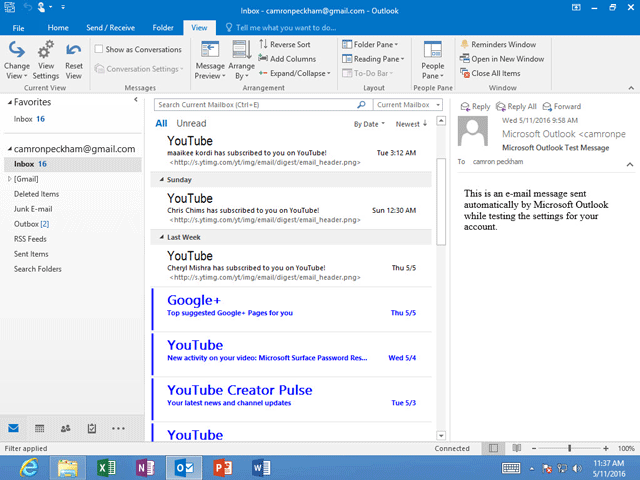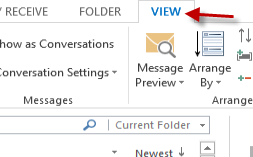- Outlook For Mac Os Change Unread Font Color Shortcut
- Outlook For Mac Os Change Unread Font Color Chart
- Outlook For Mac Os Change Unread Font Colors
Like it or not, email is still a big part of our lives. I feel like I get more email than ever, even if a smaller percentage than ever before is actually meaningful.
Change Viewing preferences in Mail on Mac. Display unread messages with bold font. Highlight messages with color when not grouped. When conversations are turned off, highlight the messages in a conversation in the message list, to help identify them more easily. Click the color well to choose a highlight color.
- DL = distribution list. This method would send a copy of the message to every user. This works well for notification-type messages but not so good for Sales or Support aliases where one person is supposed to reply, as you can't see if the message is marked as being replied to (because you have your own copy of the message).
- There's a way to get the color code information if that would help you, and then copy those numbers when you create the other style. Here's how: Make the text the color you want and highlight it. Click on the dropdown arrow next to the Font Color icon (The 'A' in the Font group). Click on 'More Colors' in the box that pops up.
- Compose your emails with style and rich formatting in Outlook and make sure that people who prefer or need a plain text version, get it automatically. With so many viruses and malware spread by rich-text or HTML messages, relying on plain text isn't a bad idea for all your outgoing emails.
- Use this tool if you want Outlook to open a new email message when you click a mailto: link in an email message or on a website. Selecting a mailto: link opens the default email application. Outlook isn't the default email application until you change that setting. How to use the tool. Download and open the Default Mail Application tool.

But even after all these years, I still rely on Apple’s Mail apps on both the Mac and iOS. That comes with its fair share of frustration, as the company has often been slow to adopt the kind of improvements driven by third-party mail clients. For me, though, what Mail lacks in innovative features it more than makes up for with its integration into Apple’s platforms.
Still, when Apple does decide to update Mail, it’s often cause for celebration, and in iOS 13, there are a number of welcome additions that people—including myself—have spent a long time awaiting.
First and foremost among them—for me anyway—is the addition of multicolored flags on iOS.1 While this has long been supported on macOS, it’s one of those areas where the two platforms have been out of sync. As someone who uses flags to notate and categorize messages, I’ve been frustrated at the lack of respect for them on iOS.
Finding the multicolored flag options, however, proves a little tricky. Pro block font. You might think it would be an option if you’ve configured the Flag button to appear when you swipe left or right on a message from your mailbox, but no. Nor do they appear in the More… sub-menu you can find by swiping left. Nor do they show up if you long press on a mail message; yes, you can tap Mark and then choose Flag, but it doesn’t give you the option to pick the color.
No, the only place you’ll find the multicolored flag options is, somewhat nonsensically, under the Reply button from a message itself. Tap the Flag button there and you’ll get a sub-menu that lets you choose one of seven colors, as well as an option to remove a flag.
Whatever color you’ve picked there most recently will be treated as the default on that device until you pick another color. So, if you go to flag a message using one of those other methods after choosing a color, you’ll see the Flag button color changed to reflect that. But jump from your iPhone to an iPad and you may have a totally different color.
While this is far from ideal interface-wise, I do at least appreciate that iOS respects the colors of flags set on the Mac, though I wish the flags themselves were a little more prominent in the message list. (They’re very small on the right side and easy to miss.)
Mail in iOS 13 also adds a few new options for those who get overwhelmed by emails—especially unwanted ones. For the first time, you can mute a thread, if you want to stop receiving notifications when the umpteenth email in that scheduling conversation arrives. (Or, as many folks have pointed out, for those ever-popular “replied to a list instead of the sender” moments that tend to take on a life of their own.)
You can also block mail from any contact, which not only prevents you from receiving messages from them in the future, but also moves all of their messages to the trash—and, moreover, syncs across devices.

Additional, Apple has improved composing messages, including a new photo picker that’s now a “card” on the iPhone, allowing it to be swiped up and down so that you can still see your message while you’re picking a photo. Nepali unicode download. (On the iPad, it’s a popover that’s independently scrollable.)
Outlook For Mac Os Change Unread Font Color Shortcut
Text formatting is much improved too, earning its own interface in the toolbar, instead of forcing you to navigate through several levels of popover menu. Plus it includes new features like lists, alignment, and font face, size, and color.
But my other favorite improvement to Mail in iOS 13 is an iPad-only capability that came along with the multitasking features: message composition windows can be dragged into Split View mode, so you can write an email while referring to another email. That’s a feature I’ve been hoping for since I was first able to put two Safari tabs side-by-side on the iPad.
Outlook For Mac Os Change Unread Font Color Chart
That’s not the only thing you can do with a message composition window, either. For a while you’ve been able to drag a draft you’re working on down to the bottom of the screen, so you could keep working in your inbox. But now, on both the iPhone and iPad, you can drag multiple drafts down to the bottom; tapping on them then provides you with an overview, much like the multi-tab view in Safari on the iPhone. It’s a much more powerful—and, dare I say, Mac-like—way of working with your email.

Finally, another welcome improvement is that iOS’s new screenshot interface, which allows you to capture the full text of a web page, also makes it possible to export an entire email message as a PDF. Previously that required a somewhat arcane workaround with the Print interface. The newer methodology isn’t that much faster, but hopefully it’s less obscure.

Not everything in iOS 13’s Mail is an unmitigated improvement, however. For one thing I’ve found the Junk mail filtering to be a bit too aggressive, catching several legitimate messages by mistake. For another, I still question the user experience choice of hiding much of Mail’s functionality behind the Reply menu, including many features that are very much not related to replying to a menu: printing, moving messages, muting threads, and so on. I realize the space is limited, but at least putting many of those features under a Share menu would seem easier for many users to comprehend.
[Dan Moren is the official Dan of Six Colors. You can find him on Twitter at @dmoren or reach him by email at dan@sixcolors.com. His latest novel, The Aleph Extraction, is out now and available in fine book stores everywhere, so be sure to pick up a copy.]

Outlook For Mac Os Change Unread Font Colors
If you appreciate articles like this one, support us by becoming a Six Colors subscriber. Subscribers get access to an exclusive podcast, members-only stories, and a special community.